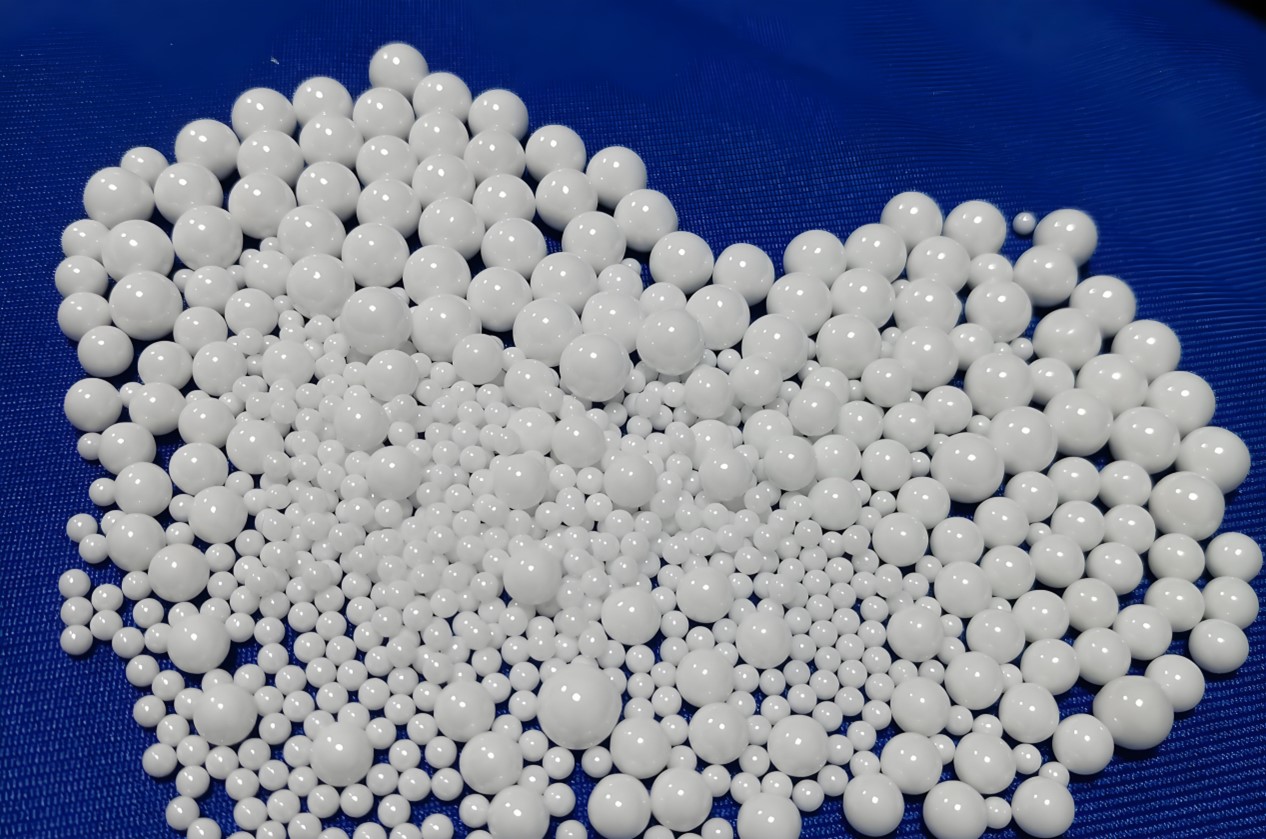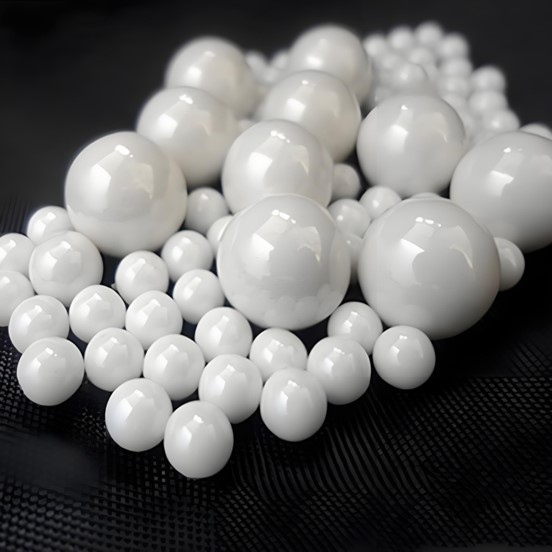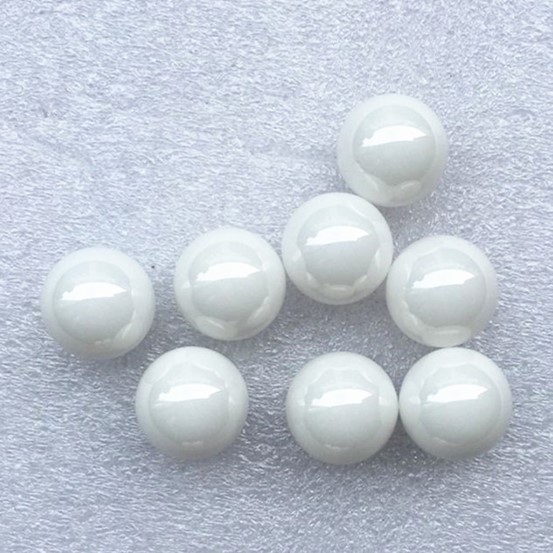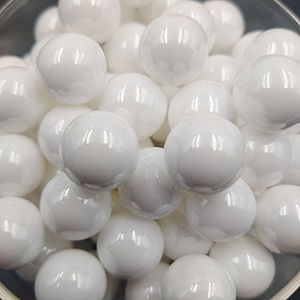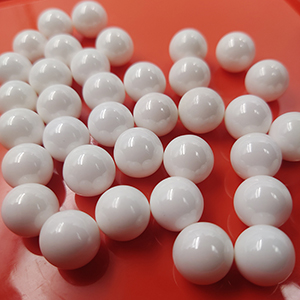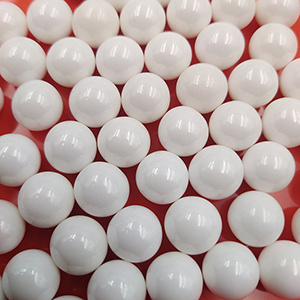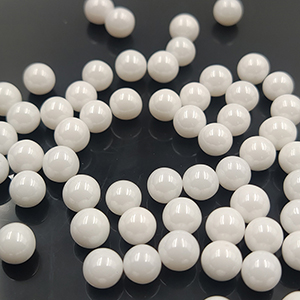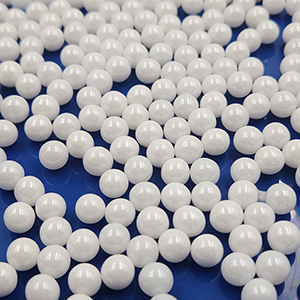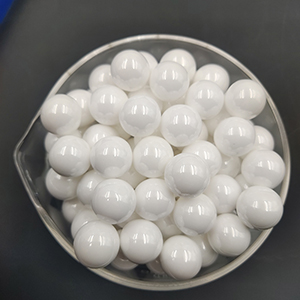Zirconia ball grinding bead ratio
The ratio of zirconia ball Grinding Balls needs to be determined according to the nature of the grinding material, target fineness and equipment type. The following are the key ratio principles and practical suggestions:
- Mass ratio (Zirconia Balls and materials)
Base ratio range
The mass ratio of zirconia balls to materials is usually 1:1 to 3:1, which needs to be optimized through experiments. For example:
1:1: insufficient balls, uneven material dispersion, wide particle size distribution.
2:1: The best matching of balls and materials, the smallest particle size and uniform distribution.
3:1: Too many balls lead to limited flow and an increase in particle size.
The effect of pellet ratio
Ball mass ratio (total ball mass/material mass) needs to balance grinding efficiency and energy consumption:
Too low (such as < 1:1) : low crushing efficiency and insufficient fineness.
Too high (e.g. > 3:1) : ball self-wear increases, fine particle content decreases, and energy consumption increases.
Recommended range: Usually 1:1 to 2:1, the specific need to combine material hardness, initial particle size adjustment.
- Volume ratio (ratio in ball mill tank)
Primary grinding
The volume ratio of balls, materials and reserved space is recommended to be 1:1:1 (each accounting for 1/3 of the volume of the tank) to ensure adequate flow and collision.
Subsequent adjustment
If the fineness is insufficient, the amount of material can be reduced or the proportion of large balls can be increased.
If the fineness is up to standard but the efficiency is low, the proportion of pellets can be increased to increase the contact area.
Three, the ratio of different sizes of balls
Multistage ball matching method
The combination of "big ball crushing + small ball refining" is adopted:
Large ball (such as 20mm) : 30%-50%, for rough crushing.
Small balls (such as 5mm or 6mm) : 50% to 70%, for fine grinding.
Example: When grinding 40μm material, 20mm ball and 5mm ball can be matched (ratio 3:1).
Ball diameter grade assignment method
According to the formula, the proportion of ball diameter at all levels is calculated:
[100](@ref) Where, Q
i
Is the mass percentage of the diameter of a ball, d
i
Is the diameter of the ball. This method can optimize the particle size distribution.
Iv. Other key factors
Stabilizer type
Yttrium stabilized (95% ZrO₂) : Strong acid and alkali resistance, suitable for highly corrosive materials.
Cerium stabilized (80% ZrO₂) : High density, suitable for polishing scenarios.
Device suitability
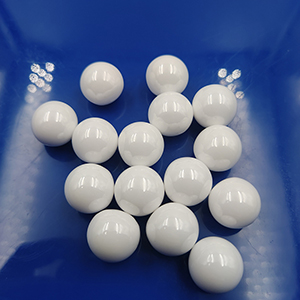
Planetary ball mill: zirconia tank is preferred to avoid metal contamination.
Sander: High energy equipment is recommended to use pure zirconium balls to reduce the risk of broken balls.
Avoid bad balls
Choose balls without bubbles and cracks, otherwise it is easy to break in grinding, affecting efficiency.
Sum up
The ratio of zirconia ball grinding balls should be determined by experiment, and the core principle is "quantity matching, size classification, and stabilizer adaptation". For example, 2:1 mass ratio is recommended when grinding ink, and hard materials need multiple stages of ball matching (such as 20mm:5mm=3:1). In practical application, dynamic adjustment should be combined with equipment characteristics and material properties.

